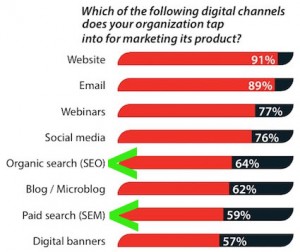E-commerce is growing fast; it has been going up each year. Global online retail sales are expected to reach 8.8 percent of the total spends by 2018 from 8.2 percent in 2017. This is about $ 2,197 trillion in 2017 and $ 2,489 trillion in 2018. However, there is still lots of potential and new opportunities for the businesses to grow their revenue base. There are several challenges too that are affecting the movement of goods and expansion to new markets. However, there are also trends and events that are the driving force of the e-commerce. Here are some emerging drivers of e-commerce growth.
1. Third-party logistics
Logistics plays a pivotal role in the creation of visibility in the e-commerce supply chain and determines the overall satisfaction of the customers, efficiency and service delivery. Unfortunately, logistics are very complex and very exhaustive. It also requires lots of expertise and a complex network of several small systems.
These challenges or trends have led to the growth of supply chain within the industry. Third-party logistics is now emerging as a key driver in the e-commerce in the country. Most online retailers are finding it financially feasible to outsource the logistics component of the supply chain given its complex and capital-intensive nature. The 3PL service providers are helping these retailers to become efficient through superior service delivery.
There are a number of e-commerce companies with their eyes on e-commerce shipments with tools to cater for the e-commerce industry. The companies offer storage maintenance, storage and delivery reducing the requirement of maintaining warehouses and means of transport. They also reduce the risk of damage when the goods are in transit.
2. Explosion in the mobile internet penetration
The adoption of the latest mobile technologies is playing a big role in the growth of e-commerce. The need for ease when doing shopping on the go led to the growth of mobile shopping.
Growth in mobile online shopping has grown tenfold since 2014. In fact, the global smartphone sales are growing each day against the fall in the unit prices. This has made the smartphones affordable even to the low-income populations of the world. According to HootSuite, by April 2017, the mobile internet penetration had grown by 66 percent bringing the number of unique mobile internet users to 4.960 billion against a world population of 7.497 billion. The highest growth in mobile internet usage has been witnessed in second and third world economies.
Mobile internet penetration combined with increasing disposable income is driving more customers to online mobile shopping. Moreover, customers are getting sharper and more informed about their needs and available solutions than never before and trusting the online retail networks with their cash.
3. Increased range of payments for underbanked shoppers
Unlike the first world, there is a huge population in the second and third world that are underbanked. In a country like Brazil about a third of the adult population does not maintain a bank account. The number is higher in many countries across Africa.
Large online payments platforms such as PayPal and Payoneer have expanded across the world. However, there is still a gap as the services are not available across all the countries. This gap is filled by local online payment processing platforms and mobile phone money transfer platforms such as Mpesa in Kenya. China has stand-alone street terminals for use in making purchases.
There has also been a high growth of online wallets and cryptocurrencies and other digital currencies that are making it possible to trade without worrying about exchange rates and country-specific financial issues. The wide spectrum of options has made it easier for many people to buy online.
4. Increased political willingness and promotion of online trade
While the first world has been upbeat about online trade, there has been some bit of resistance and controls in the most emerging market with governments keen at keeping the online trade under their control. In addition, there have been several logistical challenges as often unnecessary inspection and clearance procedures have been put at the point of entry into these markets.
However, by 2016, most governments in second and third-world countries have realized the benefits that come with increased border trade thereby allowing and even promoting it. We have witnessed lowering of customs, clearance procedures and other lengthy procedures that increased the delivery time in many emerging markets. This has also been promoted by the increased use of technology at the point of entry. Therefore more online retailers can ship to many parts of the world with ease.
5. Growth of Big Data
It has often been said that quality service comes from good analysis of customer needs and delivering customer experience in your solutions. This cannot be far from the truth when it comes to e-commerce. The delivery of quality solutions lies in analyzing the target market and delivering solutions that exceed customer expectations. The challenge has always been that the customer is not physically present and there is little chance to have a one-on-one with the customers.
Fortunately, the problem has been solved by the use of big data and AI. These tools have been a lot useful in subscription online retail marketing where customers subscribe to items to be delivered at given intervals. AI helps track the customer behavior online and lets the business determine the needs, tastes and preferences of the customer. With the information, the e-commerce sites can tune their offerings to match the exact needs and preferences of each customer.
Wrap up
Online retailers are now able to personalize each offer they make and ensure that the client feels valued. This has resulted in triple-digit growth in sales volumes, especially in saturated first world markets. When combined with sales funnel tools, companies can keep in touch with every customer that has shown interest in their products. They can customize adverts, offers, and even prices to appeal to the customer.
E-commerce continues to grow with emerging taking up the challenge. However, there is still room for growth and deliver more solutions through e-commerce platforms.
Digital & Social Articles on Business 2 Community(89)





